Samaaro + Your CRM: Zero Integration Fee for Annual Sign-Ups Until 30 June, 2025
- 00Days
- 00Hrs
- 00Min
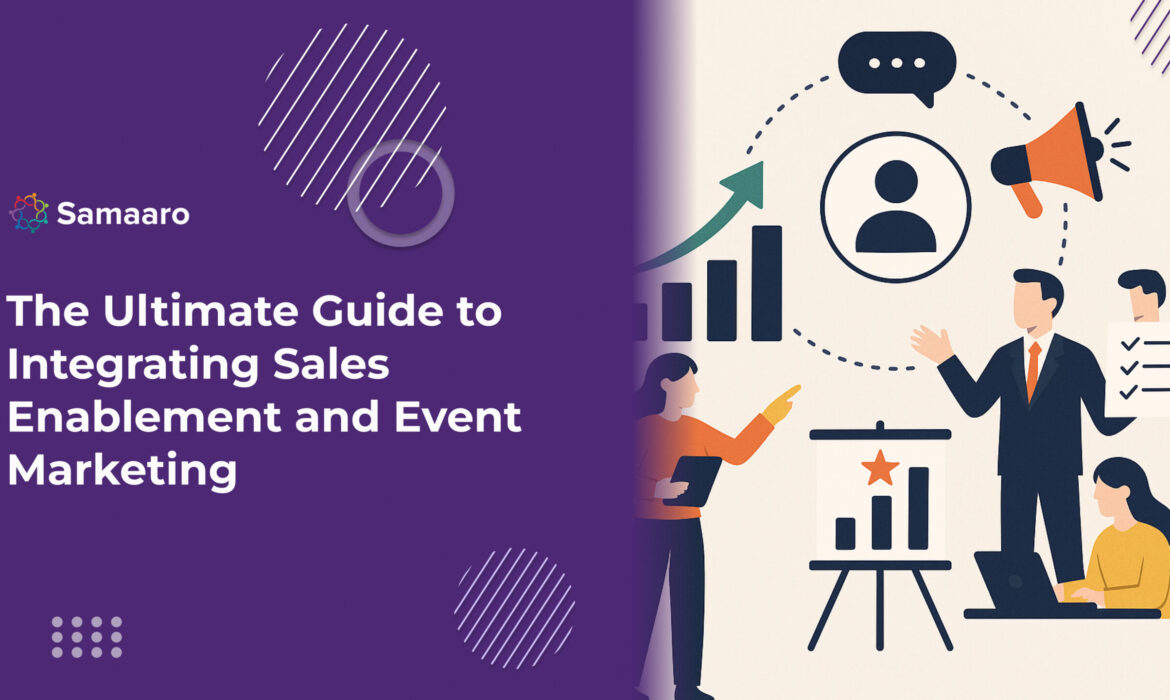
According to the Sales Enablement Collective, organizations with a defined sales enablement function achieve a 49% higher win rate on forecasted deals. Meanwhile, 47% of event marketers say in-person events deliver the highest ROI of any channel, yet many companies still treat events and sales follow-up as separate silos, leaving revenue on the table.
Sales enablement is the strategic, ongoing process of equipping sales teams with the content, guidance, training, and tools they need to engage buyers effectively and close deals faster.
Event marketing is the experiential promotion of a brand, service, or product through memorable live or virtual events designed to engage audiences, foster relationships, and drive conversions.
When sales enablement and event marketing unite under a shared strategy, organizations can amplify ROI, improve lead quality, and accelerate sales velocity.
We’ll explore:
At their core, both sales enablement and event marketing strive toward the same overarching goals: accelerating the sales pipeline, deepening engagement with high-value accounts, and driving revenue growth. When these functions operate in silos, the impact of their efforts is often diluted. However, when aligned, the results can be transformative, organizations with strong sales and marketing alignment grow revenue 32% faster and achieve 36% higher customer retention compared to those without alignment.
Events, whether trade shows, roadshows, or executive roundtables, create rich opportunities for marketing and sales to work in concert. Marketing sets the stage by generating interest and delivering value-driven experiences. Sales, equipped with timely insights and content, can then build on this momentum with targeted conversations that move prospects swiftly through the funnel. When both teams share the same goals, whether that’s generating a certain number of qualified leads, booking meetings, or closing deals sourced from an event, they can align tactics, prioritize resources more effectively, and create a seamless prospect experience that maximizes conversion potential.
Traditionally, marketing and sales operate at different stages of the buyer journey, and often in different communication modes. Marketing typically focuses on one-to-many engagement, casting a wide net to attract and nurture prospects through content, campaigns, and events. Sales, meanwhile, executes one-to-one outreach, building personalized relationships with key stakeholders to convert interest into purchase decisions.
Without intentional collaboration, this division creates gaps: marketing may deliver leads that sales deem “unqualified,” or sales may miss opportunities to leverage marketing-driven content in their conversations.
Integrating sales enablement into event marketing breaks down these barriers:
When insights flow both ways, event experiences become not just marketing exercises, but strategic sales accelerators.
To fully capitalize on the synergy between sales enablement and event marketing, organizations must move beyond ad-hoc collaboration and develop a unified go-to-market charter. This charter outlines how marketing and sales will work together, before, during, and after events, to drive shared business outcomes.
Key elements of a unified charter include:
By owning joint KPIs, both teams are incentivized to collaborate continuously and measure success through the same lens.
By formalizing collaboration through a charter, marketing and sales transition from operating in parallel to working in true partnership, creating an integrated, high-performing revenue engine that fully leverages the power of events.

Effectively integrating sales enablement into event marketing isn’t just about working together, it’s about building a system that supports the full journey of a lead, from first interaction at the event to closed deal. Here’s how to build that system across every phase:
Sales Input into Event Planning
Sales teams are on the front lines, constantly interacting with prospects and hearing firsthand their needs, challenges, and objections. Before any event, it’s crucial to tap into this intelligence. Organize collaborative workshops where sales can share updated buyer persona insights, the latest pain points emerging in conversations, and critical objections prospects raise. This information should directly inform the event’s session topics, speaker selection, messaging frameworks, and booth materials. When event content mirrors real-world buyer concerns, it’s far more likely to drive engagement and pipeline impact.
Develop Event-Specific Sales Assets
Generic brochures and one-size-fits-all presentations won’t cut it for strategic events. Ahead of each event, create custom talking points, FAQ sheets, product demos, and quick-reference materials that reflect the event theme and audience’s priorities. Design digital leave-behinds (such as product one-pagers, customer success stories, or demo videos) that sales can quickly send after conversations. These resources should act as bridges between the excitement of the event and the deeper buying discussions that happen afterward.
Train Sales Reps on Event Goals
Your sales team should never arrive at an event unsure of what success looks like. Host pre-event workshops or virtual briefings to align everyone on key goals, such as the number of qualified conversations or meetings booked. Define attendee segments (e.g., VIP prospects, target accounts) and clarify lead qualification criteria. Role-play common booth scenarios to help reps practice introductions, qualifying questions, and smooth transitions into follow-up conversations. The better prepared the sales team is, the more impactful every attendee interaction will be.
Pre-Event Outreach
Waiting until prospects walk up to the booth is a missed opportunity. Arm your sales teams with pre-written email templates and LinkedIn messaging scripts that they can personalize and send to registered attendees before the event. Encouraging reps to book meetings in advance not only increases on-site engagement but also boosts the overall return on investment by focusing efforts on high-value prospects. Personalized pre-event outreach can significantly improve booth traffic quality and shorten post-event sales cycles.
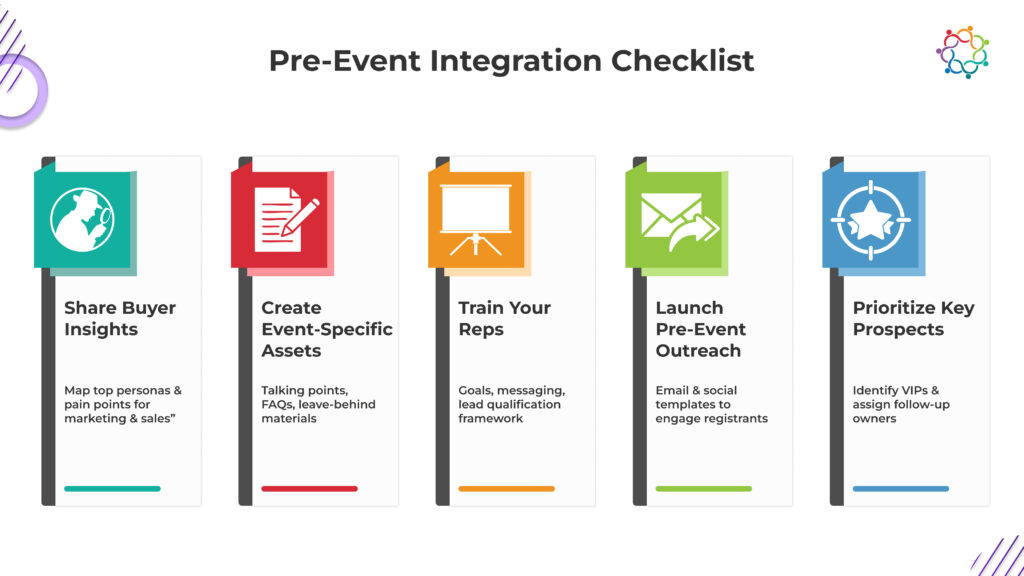
Real-Time Content Sharing
Events are dynamic, and plans often evolve on the ground. Product updates, schedule changes, or new talking points can arise. Create real-time communication channels, like a dedicated Slack workspace or a mobile app, so marketing can instantly push updates to the sales team. This ensures everyone is delivering the most current information during conversations with prospects.
Coordinated Engagement Roles
Clearly define roles and responsibilities for the sales and marketing teams before the event starts. Assign who will manage demos, who will handle meeting bookings, who will be responsible for scanning badges, and who will collect qualitative feedback. This division of labor prevents confusion, ensures no opportunity is missed, and creates a seamless experience for attendees moving through the booth or event space.
Seamless Lead Capture and Qualification
Forget business cards and manual note-taking. Implement digital lead capture tools like QR code scanning, mobile forms, or badge scanning apps that sync directly with your CRM system. Design your lead capture forms to include key qualification questions (such as budget, timeline, and decision-making authority) so sales reps can prioritize follow-up efforts immediately after the event. The goal is to achieve 100% lead data capture, clean, complete, and actionable, without burdening the onsite team with administrative tasks.
Event Content in Sales Conversations
Leverage event programming to enrich sales conversations. Equip your reps with strategies to reference keynote sessions, panel discussions, or workshops when speaking to prospects. For example, a rep might say, “As you heard in the opening keynote, digital transformation is reshaping procurement, let me show you how our platform directly addresses that shift.” This positions your team as knowledgeable and aligned with industry trends, enhancing credibility.
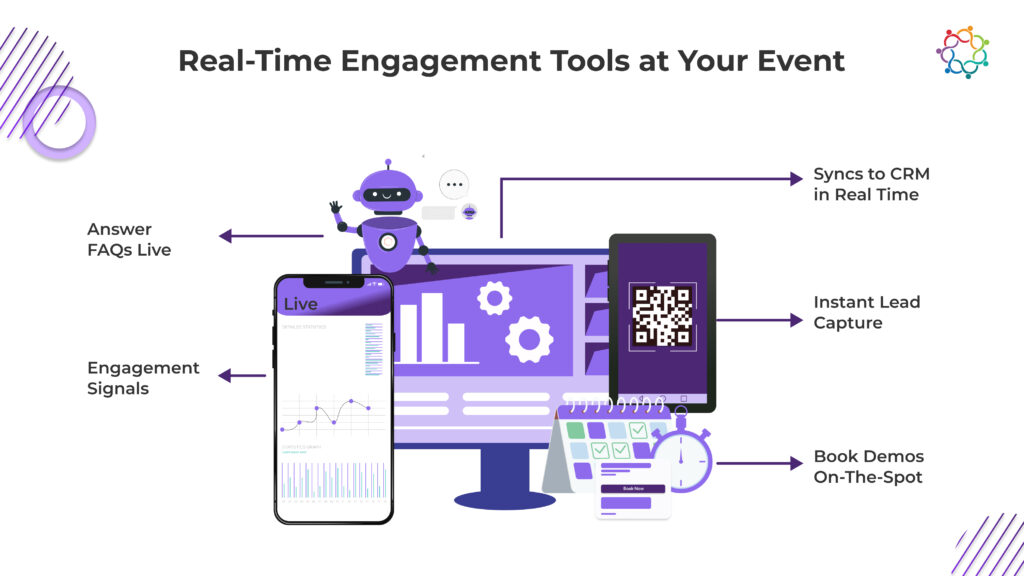
Prompt, Personalized Follow-Up
The first 48 hours after an event are critical. Leads are warm, memories are fresh, and competitors are also reaching out. Provide your sales reps with personalized follow-up toolkits, pre-approved email templates, session recordings, key presentation decks, and follow-up guides tailored to attendee interactions. Personalization is key here: a generic “Thanks for stopping by” email won’t stand out. Mention specific sessions attended, conversations had, or interests expressed.
Lead Nurturing Campaigns
Not every lead will be ready to buy immediately. Build segmented nurturing workflows based on event engagement. For example, send product deep-dive resources to booth visitors, educational content to session attendees, and case studies to those who requested demos. Automation can help maintain momentum without overwhelming the sales team. Personalization based on interaction history keeps your brand top-of-mind until leads are ready to move forward.
Sales Debrief and Feedback Loop
Immediately after the event, gather your sales team for a structured debrief. Discuss:
Measuring Impact
Track and analyze key performance indicators (KPIs) to evaluate the effectiveness of your integrated approach:
These metrics not only demonstrate ROI but also highlight where further improvements can be made.
The success of integrating sales enablement and event marketing hinges not just on execution, but on how effectively you measure impact. Without a data-driven approach, it’s nearly impossible to identify what worked, what didn’t, and where to improve. By tracking the right metrics and using the right tools, teams can close the loop between event execution and revenue generation.
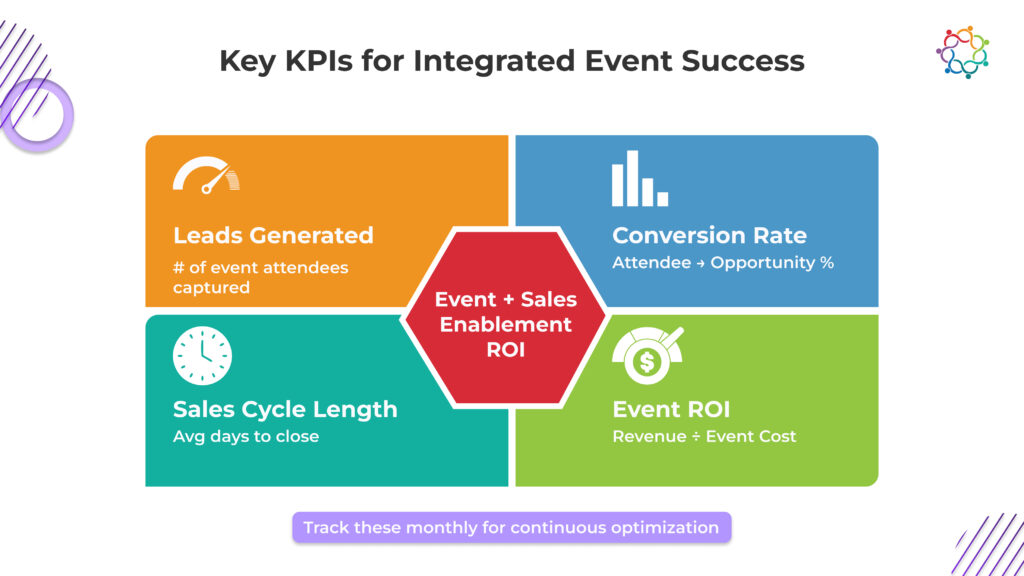
To assess the effectiveness of your integration strategy, consider KPIs across multiple dimensions: pipeline contribution, sales efficiency, team collaboration, and overall return on investment.
This is your foundational metric, the raw count of individuals who engaged with your brand at the event. But don’t stop at just collecting contact details. Segment leads by type (e.g., booth visitor, session attendee, demo participant) to better understand where engagement occurred and which touchpoints were most effective.
Volume alone doesn’t tell the full story. Quality matters even more. Work with sales to assess whether event leads align with your ideal customer profile (ICP) and how likely they are to convert. Are these decision-makers? Do they have active pain points? Lead scoring models and qualification criteria should be applied here, enriched by feedback directly from the reps who engaged them.
Track how many event leads progress through the sales funnel, from marketing-qualified leads (MQLs) to sales-qualified leads (SQLs), to opportunities, and ultimately to customers. This metric is one of the most telling indicators of how well your event strategy and sales enablement materials are aligned. A spike in early conversions may point to strong pre-event alignment; longer-term conversions might highlight effective nurturing.
Compare the average sales cycle for leads sourced from events versus other channels. A shorter cycle suggests that your event provided high-value interactions that accelerated decision-making. If the cycle is longer, it may signal the need for better follow-up content or lead nurturing strategies.
Perhaps the most tangible metric, revenue attribution helps quantify the real business impact of your event efforts. Track closed-won deals that originated from event engagements, and tie them back to specific touchpoints, was it the keynote session that sparked interest, or the one-on-one booth demo that sealed the deal?
Post-event surveys or informal interviews with the sales team can uncover whether they felt equipped to engage attendees effectively. Were the talking points helpful? Did they receive timely updates and follow-up materials? Their feedback is essential to improving future integrations.
Just as sales relies on marketing for high-quality content, marketing depends on timely and personalized follow-up. Ask your marketing team whether the sales team used the materials provided, followed up with leads within the ideal time frame, and reported back outcomes. Misalignment here could point to a breakdown in communication or accountability.
At the highest level, calculate the return on investment for your event efforts. Factor in all associated costs, venue, booth design, travel, staff time, technology, and compare it against total pipeline generated and actual revenue closed. ROI helps justify future event spend and signals the value of integration efforts.
The right tech stack is essential for tracking these KPIs accurately and consistently. Here’s a breakdown of the key tools to consider:
Your CRM acts as the central source of truth for all lead and opportunity data. Systems like Salesforce, HubSpot, or Zoho allow you to attribute leads to specific events, track their journey through the pipeline, and measure conversion and revenue metrics. Make sure event data is tagged appropriately so you can filter and analyze it later.
Platforms like Marketo, ActiveCampaign, or Mailchimp help you run lead nurturing campaigns and monitor engagement post-event. These systems are particularly useful for segmenting leads based on event interactions and delivering personalized follow-ups.
Dedicated tools for event registration, badge scanning, session tracking, and lead capture (like Samaaro) help streamline attendee data collection. When integrated with your CRM, these tools ensure no data is lost between the event floor and your sales pipeline.
Visualization platforms like Tableau, Power BI, or the analytics modules within your CRM can be used to create dashboards that combine sales, marketing, and event data. This allows stakeholders to monitor performance in real-time and uncover trends, such as which sessions generate the most SQLs or which event formats drive higher ROI.
Measuring integrated efforts isn’t just about proving ROI, it’s about refining your go-to-market engine. Every data point helps you optimize content, improve team collaboration, and build better events. By establishing a repeatable framework for measurement, organizations can turn every event into a smarter, more revenue-focused endeavor.
Bringing together sales enablement and event marketing may sound straightforward on paper, but in practice, it often involves untangling misalignments, habits, and systems that have developed independently over time. While the rewards of integration are substantial, it’s important to anticipate common hurdles and proactively address them.
The Challenge:
Marketing and sales teams often operate in silos, with limited visibility into each other’s goals, strategies, and feedback loops. This disconnect leads to missed opportunities: marketing may generate leads that sales isn’t prepared to act on, or sales may not follow up in ways that reflect the event’s messaging.
How to Overcome It:
The Challenge:
Sales might view events purely as lead-generation opportunities, while marketing sees them as brand-building platforms. Without shared goals, success is defined inconsistently, making post-event evaluation difficult and collaboration strained.
How to Overcome It:
The Challenge:
Integrating efforts requires time, tools, and people, from enabling technologies to sales training. Without proper investment, teams may default to operating in isolation.
How to Overcome It:
The Challenge:
Marketing and sales teams often use different systems, event tools, CRMs, automation platforms, that don’t naturally talk to one another. This can result in data fragmentation, delays in follow-up, and reporting blind spots.
How to Overcome It:
The Challenge:
People are often hesitant to shift away from familiar workflows, even if they’re inefficient. Sales reps might be wary of new follow-up processes, while marketing teams might be reluctant to rely on sales input during event planning.
How to Overcome It:
Every challenge is also an opportunity to strengthen alignment and drive better results. By acknowledging potential roadblocks and proactively creating solutions, organizations can foster a culture of collaboration that makes every event more impactful, and every lead more valuable.
The evolving landscape of B2B engagement calls for more than just great events or polished sales pitches—it demands cohesion. When sales enablement and event marketing operate as one, the results are undeniable: stronger pipelines, faster conversions, and a unified customer journey that drives meaningful revenue impact.
Success lies not in one team outshining the other, but in both teams moving in sync—from event planning to post-event pipeline acceleration. Integration isn’t a one-time project—it’s an ongoing mindset shift. It means committing to regular feedback, shared tools, and mutual accountability.
At Samaaro, we believe that events should be a strategic growth channel—not an isolated activity. That’s why our platform is built to empower marketing and sales teams to collaborate more effectively. From real-time lead capture and centralized attendee data to seamless integrations with your CRM and marketing automation tools, Samaaro ensures that every event drives measurable sales impact.
We’re not just helping you host better events—we’re helping you close better deals.
Ready to integrate your event marketing with sales enablement?

Built for modern marketing teams, Samaaro’s AI-powered event-tech platform helps you run events more efficiently, reduce manual work, engage attendees, capture qualified leads and gain real-time visibility into your events’ performance.
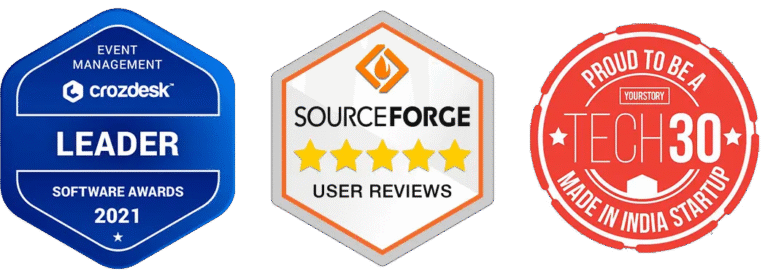
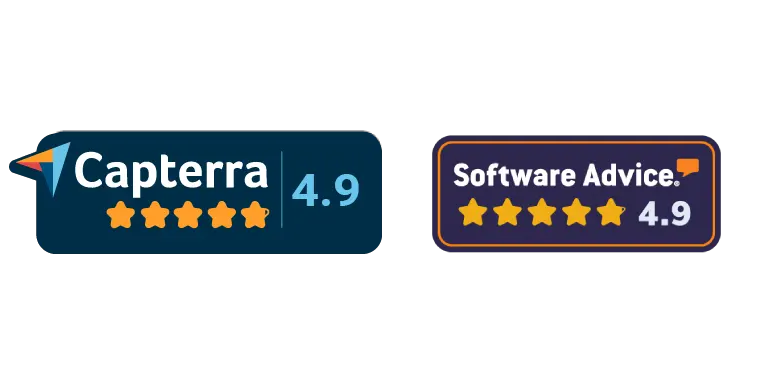
© 2025 — Samaaro. All Rights Reserved.